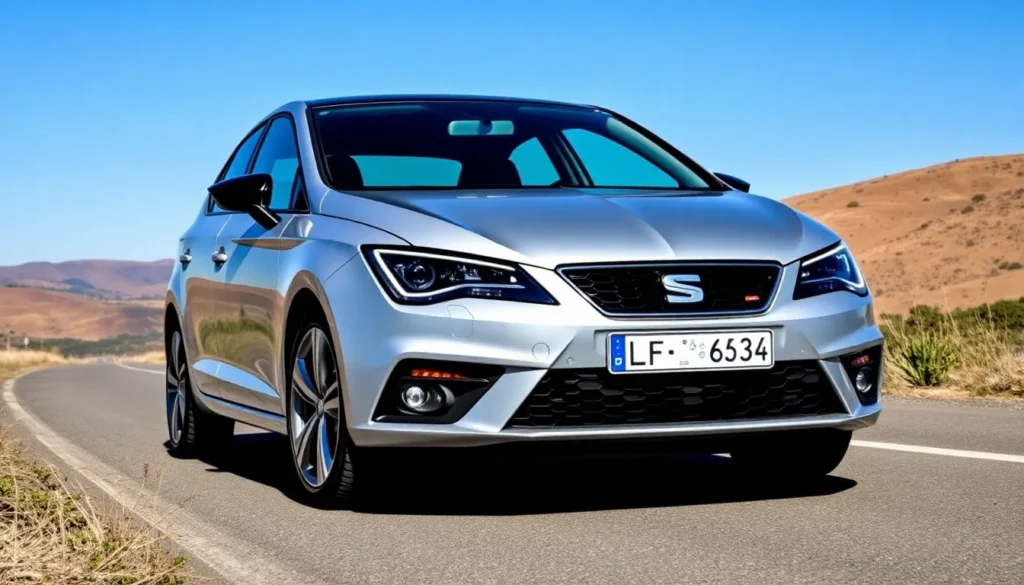The SEAT León Mk1 represents one of the most compelling chapters in Spanish automotive history. Launched in 1999, this compact car transformed SEAT’s reputation from budget manufacturer to serious performance contender. We’ve witnessed countless enthusiasts fall in love with the León’s perfect blend of European sophistication and accessible pricing.
What makes the Mk1 León truly special isn’t just its sharp Italdesign-penned styling or its impressive build quality. It’s the way this car democratized performance driving for an entire generation. Whether you’re considering the efficient base models or the fire-breathing Cupra variants, the León Mk1 offers something genuinely exciting.
We’ll explore everything that makes this Spanish hot hatch a modern classic worth your attention. From its turbocharged engines to its surprisingly spacious interior, the León Mk1 proves that great cars don’t always come from Germany or Japan.
Overview of the Seat Leon Mk1
The Seat Leon Mk1 represents a pivotal moment when Spanish engineering met Volkswagen Group excellence. Built on the proven PQ34 platform from 1999 to 2005, this compact family car delivered European sophistication at an accessible price point that challenged established competitors like the Volkswagen Golf and Ford Focus.
Engineering excellence defines the Leon Mk1’s foundation through its shared architecture with the Audi A3 and Skoda Octavia. We find sophisticated multi-link rear suspension systems and precise steering geometry that elevated ride quality beyond typical budget offerings. The chassis tuning emphasized sporty handling characteristics while maintaining everyday comfort levels.
Design language showcased bold Spanish flair through distinctive headlight clusters and aggressive front grille treatments. Interior appointments featured high-quality materials including soft-touch plastics and durable fabric upholstery that competed directly with premium German alternatives. The cabin design maximized space efficiency with 341 liters of boot capacity and generous rear passenger legroom.
Performance variants transformed the Leon Mk1 into a genuine enthusiast proposition. The 1.8T 20v engine produced 180 horsepower in Cupra specifications while the top-tier Cupra R delivered 210 horsepower through advanced turbocharging technology. These powertrains enabled 0-60 mph acceleration times of 7.2 seconds and 6.9 seconds respectively.
Production numbers reached approximately 500,000 units across all variants during the six-year manufacturing run. Spanish factories in Martorell produced the majority of vehicles with additional assembly operations supporting European market demands. Export markets included the United Kingdom, Germany, and various Mediterranean countries where the Leon Mk1 established strong brand recognition.
| Engine Variant | Power Output | 0-60 mph | Top Speed |
|---|---|---|---|
| 1.6 16v | 105 hp | 10.9 seconds | 112 mph |
| 1.8T 20v | 150 hp | 8.4 seconds | 130 mph |
| 1.8T Cupra | 180 hp | 7.2 seconds | 139 mph |
| 1.8T Cupra R | 210 hp | 6.9 seconds | 146 mph |
Safety credentials earned four-star Euro NCAP ratings through comprehensive crash protection systems. Standard equipment included dual front airbags and anti-lock braking systems across all trim levels. Higher specifications added side impact protection and electronic stability control that enhanced active safety capabilities.
Market positioning established the Leon Mk1 as a value-oriented alternative to premium German competitors. Pricing strategies undercut equivalent Golf GTI models by approximately 15% while delivering comparable performance and superior equipment levels. This approach attracted younger buyers seeking performance without premium brand premiums.
Design and Styling
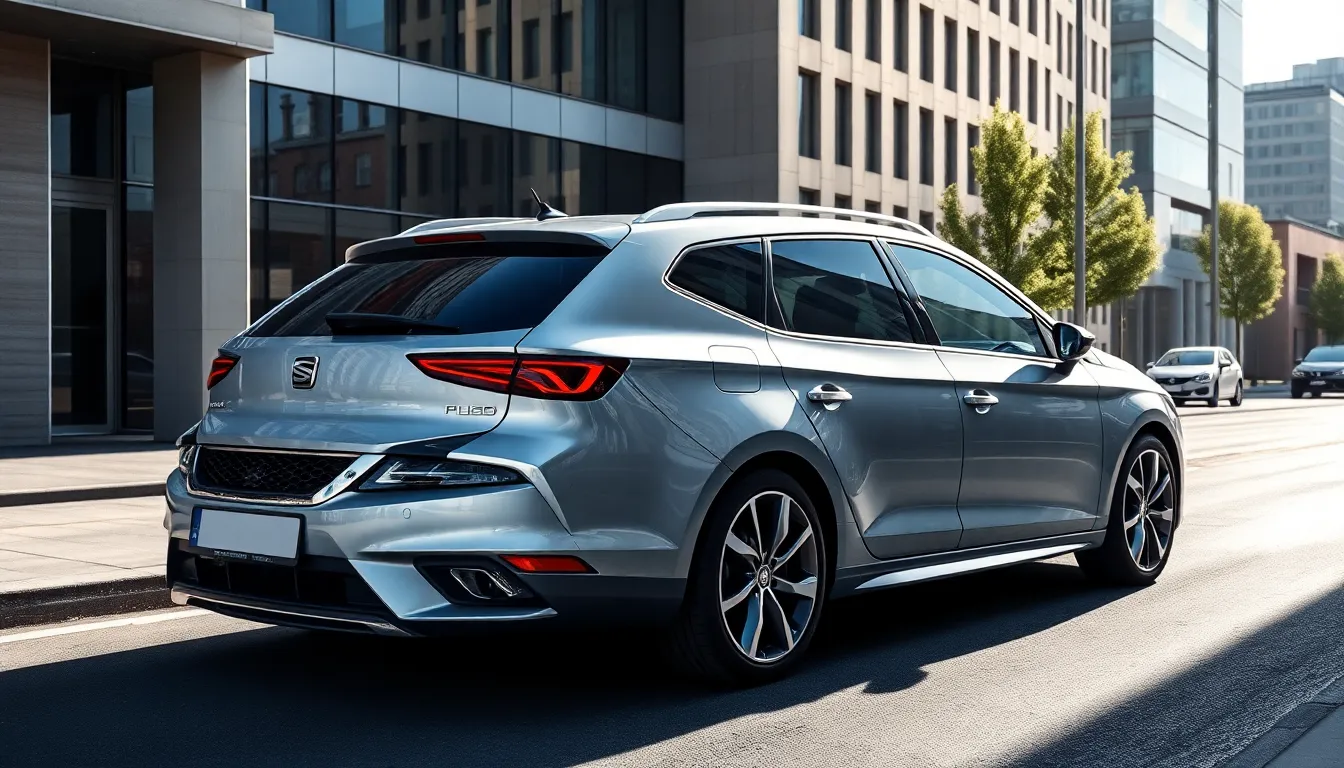
Design elements of the SEAT León Mk1 established a new aesthetic direction for Spanish automotive manufacturing. Bold styling cues distinguished this model from conservative European competitors while maintaining sophisticated appeal.
Exterior Design
Exterior proportions showcase distinctive Spanish character through aggressive front fascia treatment and sculpted body panels. Sharp headlight assemblies feature clear lens covers with integrated fog lamp housings positioned in the lower bumper section. Chrome accented grille displays horizontal slats that create visual width while housing the SEAT logo prominently at center position.
Side profile reveals pronounced wheel arches that accommodate 15-inch to 17-inch alloy wheels depending on trim specification. Door handles integrate flush mounting systems for improved aerodynamic efficiency. Rear quarter windows use darkened glass treatment on higher specification models.
Rear design incorporates wraparound taillight clusters with distinctive red and amber lens configurations. Integrated spoiler elements enhance the tailgate’s sporty appearance while dual exhaust outlets on performance variants signal enhanced capability. Color palette includes Reflex Silver, Tornado Red, and Magic Blue metallic finishes that complement the León’s ever-changing styling.
Body cladding remains minimal to preserve clean lines throughout the vehicle’s profile. Chrome trim strips accent window surrounds while black protective elements protect lower door sections from parking damage.
Interior Layout and Features
Interior architecture maximizes cabin space through efficient packaging of the PQ34 platform dimensions. Dashboard layout features driver-oriented control placement with clearly marked instrument clusters displaying speedometer, tachometer, fuel level, and temperature gauges.
Central console houses climate control systems with rotary dials for temperature and fan speed adjustment. Audio system integration includes radio/CD player combinations with optional premium sound packages featuring enhanced speaker configurations.
Seating arrangements provide supportive bolstering in both front and rear positions. Fabric upholstery comes standard while leather appointed surfaces appear on Cupra and high-line trim levels. Front seats offer manual adjustment with optional power assistance on select models.
Storage answers include glove compartment capacity, door panel pockets, and center console compartments for personal items. Cup holders accommodate standard beverage containers while map pockets provide document storage behind front seatbacks.
Rear passenger space delivers adequate legroom and headroom measurements for adult occupancy. Split-folding rear seats expand cargo capacity from 341 liters to 1,162 liters with seats lowered. Interior ambient lighting creates welcoming atmosphere during evening driving conditions.
Engine Options and Performance
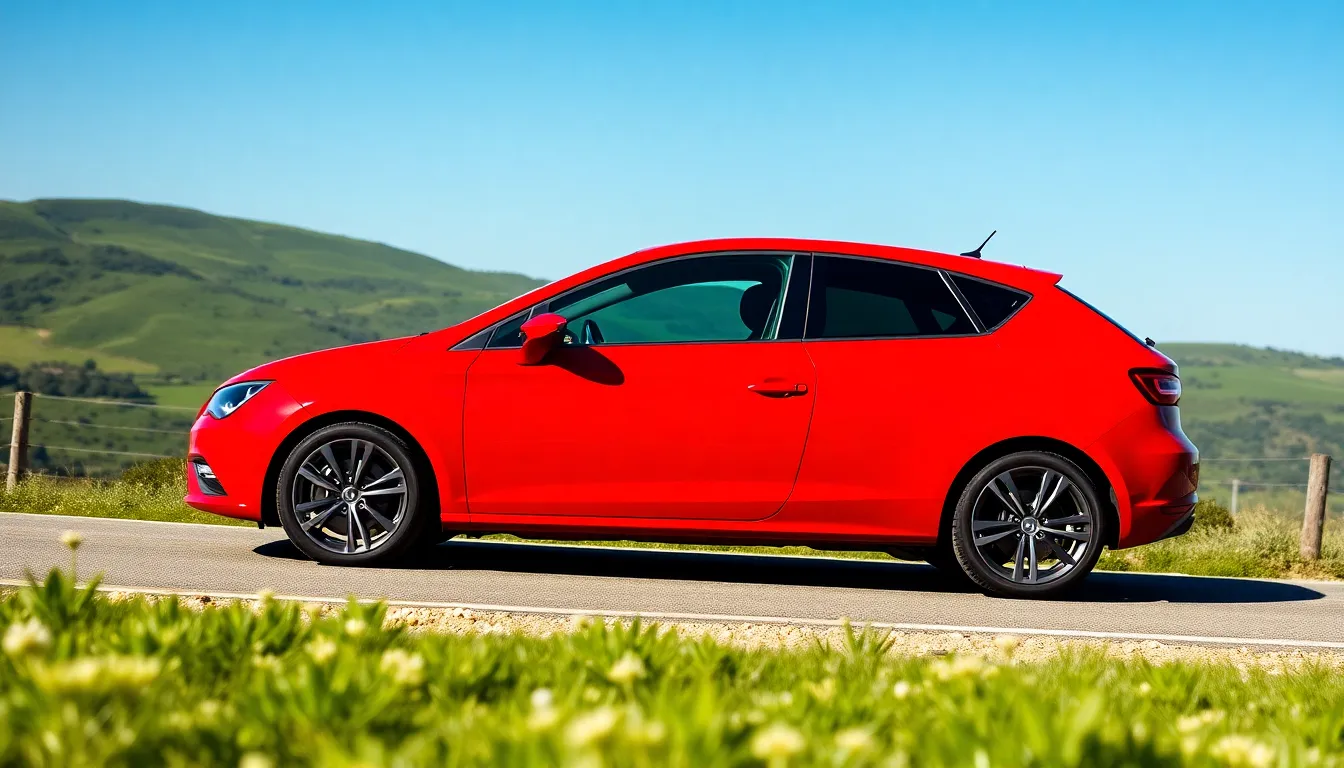
Engine diversity defines the León Mk1’s appeal across multiple market segments. SEAT equipped this Spanish hatchback with powerplants ranging from economical diesels to turbocharged performance units.
Petrol Engines
Volkswagen Group’s proven petrol engines powered most León Mk1 variants throughout the production cycle. The base 1.4-liter naturally aspirated unit delivered 75 hp and suited urban driving with modest fuel consumption of 32 mpg combined. Entry-level buyers appreciated this engine’s reliability and low maintenance costs.
The 1.6-liter naturally aspirated engine produced 100 hp and offered improved acceleration for highway driving. This powerplant achieved 0-62 mph in 11.8 seconds while maintaining reasonable fuel economy at 30 mpg combined.
Performance enthusiasts gravitated toward the 1.8-liter turbocharged unit that generated 150 hp in standard form. This engine featured variable valve timing and delivered strong torque output across the rev range. The 1.8T variant accelerated from 0-62 mph in 8.9 seconds and reached a top speed of 130 mph.
High-performance applications utilized the 1.8T engine with enhanced turbocharging and intercooling systems. These modifications increased power output significantly while maintaining the engine’s fundamental reliability characteristics.
Diesel Engines
SEAT offered three diesel engines to capture the growing European demand for fuel-efficient motoring. The 1.4 TDI three-cylinder unit produced 75 hp and delivered exceptional fuel economy of 52 mpg combined. This engine appealed to cost-conscious buyers prioritizing running costs over performance.
The 1.9 TDI engine became the volume diesel seller with two power outputs available. The lower-specification version generated 90 hp while the higher-output variant produced 110 hp. Both engines featured Volkswagen Group’s proven unit injector technology for refined operation and strong torque delivery.
Performance characteristics of the 1.9 TDI 110 hp variant included 0-62 mph acceleration in 10.7 seconds and a top speed of 115 mph. Fuel consumption remained impressive at 45 mpg combined even though the increased power output.
The flagship 1.9 TDI 130 hp engine topped the diesel range with sport-tuned injection timing and enhanced turbocharging. This powerplant delivered 229 lb-ft of torque and accelerated the León from 0-62 mph in 9.8 seconds.
Cupra Performance Variants
SEAT developed the Cupra badge specifically for León Mk1 performance models that challenged hot hatchback conventions. The original Cupra featured a 180 hp version of the 1.8T engine with larger turbocharger and sport-calibrated engine management. This variant achieved 0-62 mph in 7.9 seconds and reached 140 mph maximum speed.
The Cupra R represented the pinnacle of León Mk1 performance with 210 hp from the highly tuned 1.8T powerplant. Engineers fitted a larger K04 turbocharger, high-flow fuel injectors, and reinforced internals to handle increased boost pressure. Acceleration improved dramatically with 0-62 mph achieved in 6.9 seconds.
Top speed of the Cupra R reached 146 mph while maintaining stability through aerodynamic enhancements and lowered suspension. The engine produced 206 lb-ft of torque that peaked at just 1,950 rpm for strong low-end response.
Limited production numbers made the Cupra R particularly desirable among collectors. SEAT manufactured approximately 799 Cupra R models for the UK market between 2003 and 2004. Each vehicle featured unique identification plates and exclusive interior trim elements that distinguished it from standard Cupra models.
Driving Experience and Handling
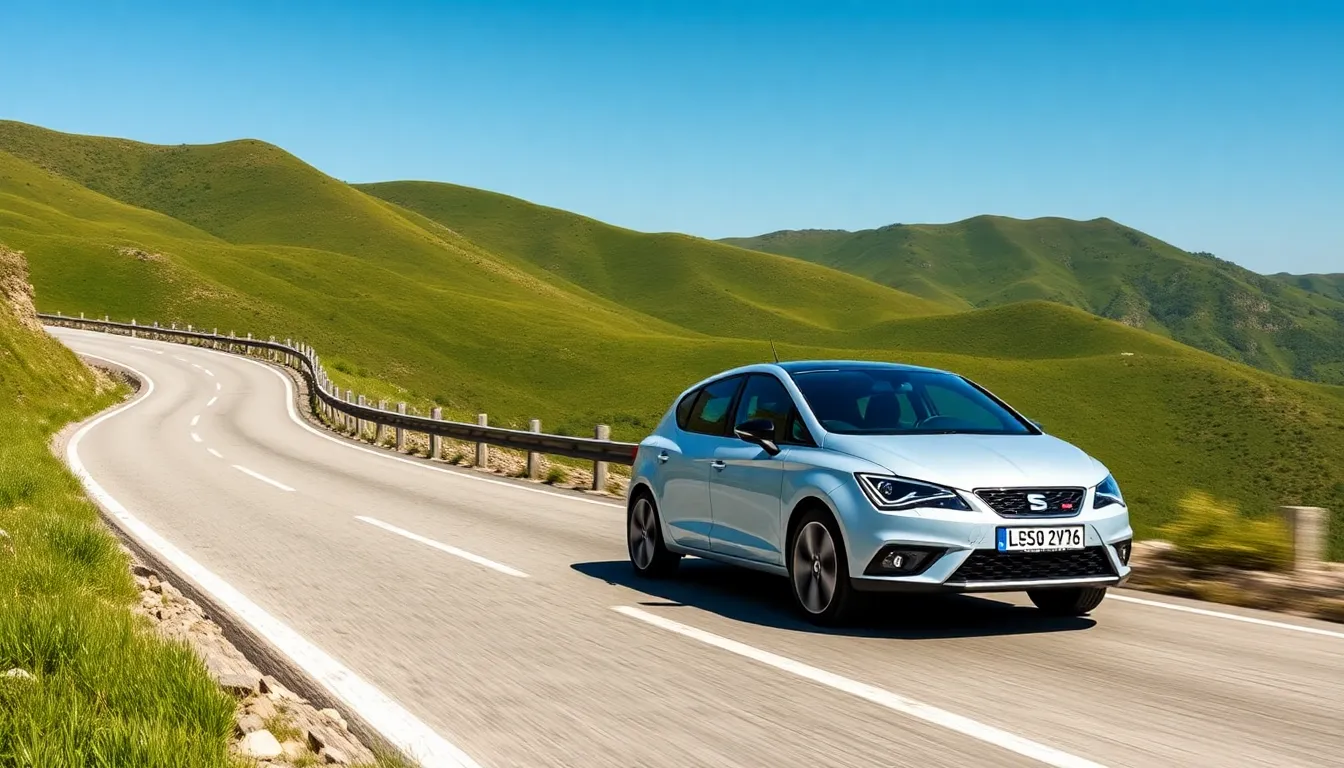
The SEAT León Mk1 transforms every journey into an captivating experience through its sophisticated chassis dynamics and responsive handling characteristics. We find the multi-link rear suspension setup delivers exceptional road holding compared to the torsion beam systems found in many competitors like the Ford Focus or Peugeot 307.
Behind the wheel, the León Mk1’s steering provides precise feedback through its rack and pinion system with variable assistance ratios. Cornering confidence remains high even during spirited driving sessions, thanks to the 50mm lower ride height on Cupra variants and the optimized suspension geometry borrowed from Volkswagen Group’s premium platforms.
Suspension and Chassis Dynamics
Multi-link rear suspension architecture sets the León Mk1 apart from budget hatchbacks that rely on simpler beam axles. Four independent links per rear wheel allow precise wheel control during compression and rebound cycles, maintaining optimal tire contact with the road surface. Front MacPherson struts feature larger diameter dampers on performance models, with progressive spring rates that balance comfort and control.
Chassis rigidity benefits from the PQ34 platform’s robust construction, which incorporates strategic reinforcement points shared with the Audi A3. Body roll remains minimal during aggressive cornering maneuvers, while the 57.5:42.5 weight distribution provides neutral handling characteristics across the engine range.
Steering Feel and Response
Electric power steering wasn’t standard on early León Mk1 models, giving drivers direct mechanical connection to the front wheels through the hydraulic assistance system. Steering ratio measures 15.9:1 on base models and quickens to 14.5:1 on Cupra variants for sharper turn in response.
Lock to lock rotation requires just 2.7 turns on performance models, enabling rapid directional changes during spirited driving. Feedback through the steering wheel communicates road surface conditions and tire grip levels effectively, particularly on models equipped with 17-inch wheels and lower profile tires.
Performance Variant Dynamics
Cupra models receive sport tuned suspension with firmer damper valving and progressive rate springs that reduce body movement by approximately 15% compared to standard variants. Electronic Stability Program (ESP) became standard on Cupra R models, allowing controlled power slides while maintaining ultimate safety margins.
Braking performance on Cupra variants benefits from 312mm front discs with four piston calipers, providing consistent stopping power during track sessions. ABS systems feature four channel operation for individual wheel control, while brake assist technology reduces stopping distances in emergency situations.
Real Industry Driving Dynamics
Urban driving scenarios showcase the León Mk1’s compliant suspension tuning that absorbs road imperfections without excessive harshness. Highway cruising remains stable at speeds up to 130 mph on Cupra R variants, with minimal wind noise intrusion and composed straight line tracking.
Mountain road testing reveals the León Mk1’s European tuning philosophy, where handling precision takes priority over pure comfort. Weight transfer during direction changes feels controlled and predictable, allowing confident cornering speeds that rival more expensive German alternatives like the BMW 318ti or Mercedes A-Class.
Reliability and Common Issues
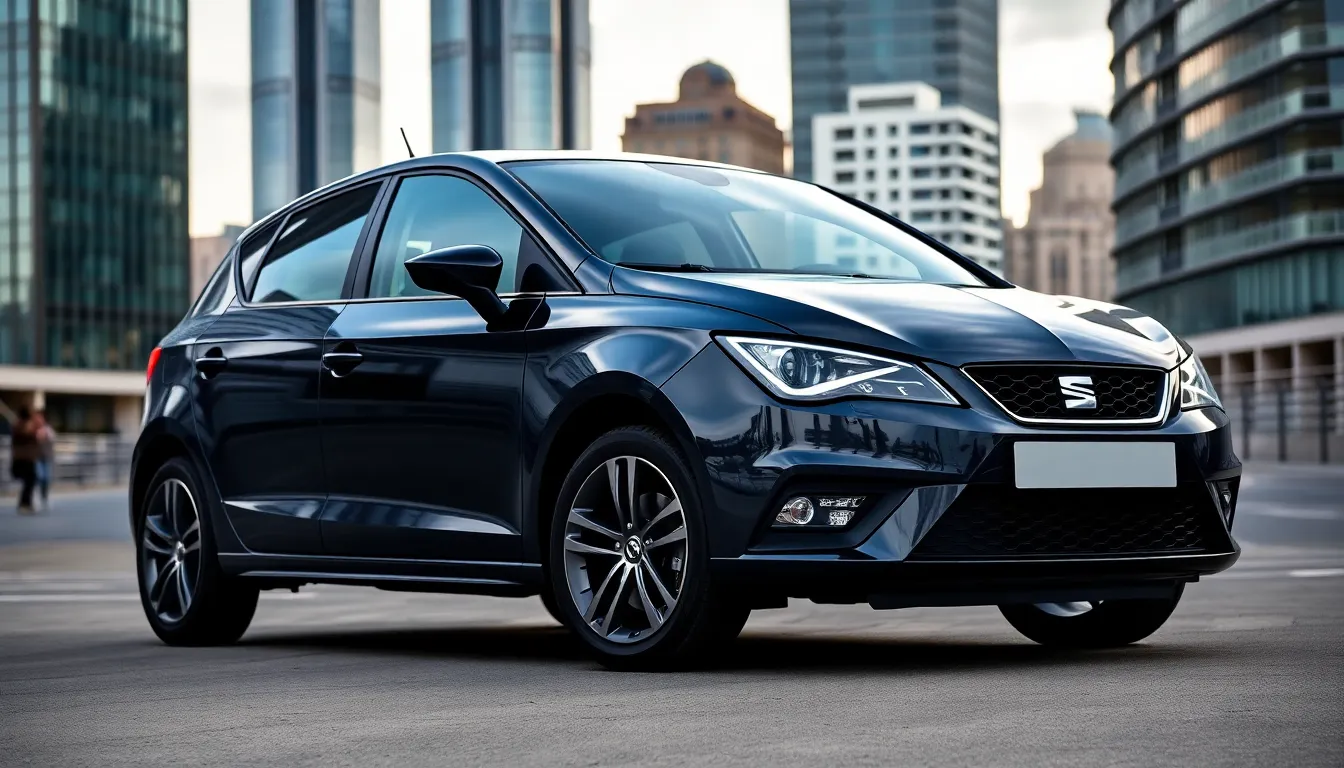
The SEAT León Mk1 delivers solid reliability for its era, though certain components require attention as these vehicles age. We’ve identified exact problem areas that affect ownership costs and maintenance schedules across the production run.
Known Problems
Electrical gremlins plague many León Mk1 models, particularly affecting the central locking system and window regulators. Window motors fail frequently after 80,000 miles, with replacement costs ranging from $150 to $300 per door. Central locking actuators malfunction in cold weather, leaving owners locked out or unable to secure their vehicles properly.
Cooling system components deteriorate rapidly on turbocharged variants, especially the 1.8T engines. Water pumps typically fail between 60,000 and 90,000 miles, causing overheating issues that can damage cylinder heads. Expansion tanks crack around the mounting points, leading to coolant loss and potential engine damage if not addressed promptly.
Mass airflow sensors create running problems across all engine variants, causing rough idle conditions and poor fuel economy. These sensors fail without warning, often leaving drivers stranded with check engine lights. Replacement costs average $200 to $350 depending on the exact engine configuration.
Suspension components wear prematurely on high-mileage examples, particularly the front lower control arm bushings and rear shock absorbers. Bushings typically need replacement around 70,000 miles, while shock absorbers show signs of leakage by 90,000 miles. Performance variants experience accelerated wear due to stiffer suspension tuning.
Clutch systems on manual transmissions require replacement between 80,000 and 120,000 miles, depending on driving conditions. Dual-mass flywheels on diesel variants often fail simultaneously with the clutch, doubling replacement costs to approximately $1,500 to $2,000.
Maintenance Costs
Regular servicing expenses remain reasonable for León Mk1 ownership, with annual costs averaging $600 to $900 for standard maintenance items. Oil changes occur every 10,000 miles using synthetic lubricants, costing approximately $80 to $120 at independent service centers.
Brake component replacement costs vary significantly between standard and performance variants. Standard models require front brake pads every 30,000 miles at $150 to $200, while Cupra variants consume pads twice as quickly due to aggressive compound specifications. Brake discs typically last 60,000 miles on standard models but only 40,000 miles on performance variants.
Timing belt services represent major maintenance milestones occurring every 60,000 to 80,000 miles depending on engine type. Costs range from $400 for basic engines to $800 for turbocharged variants requiring additional component replacement. Water pump replacement during timing belt service adds $200 to $300 to the total bill.
Fuel system cleaning becomes necessary on direct injection engines around 100,000 miles, costing $300 to $500 at specialized service centers. Carbon buildup affects intake valves on TSI engines, requiring walnut blasting procedures that independent shops charge $400 to $600 to perform.
Parts availability remains excellent through SEAT dealerships and aftermarket suppliers, keeping costs competitive compared to premium German alternatives. Common wear items like filters, spark plugs, and fluids cost 20% to 30% less than equivalent Audi or Volkswagen components even though sharing identical part numbers.
Practicality and Everyday Use
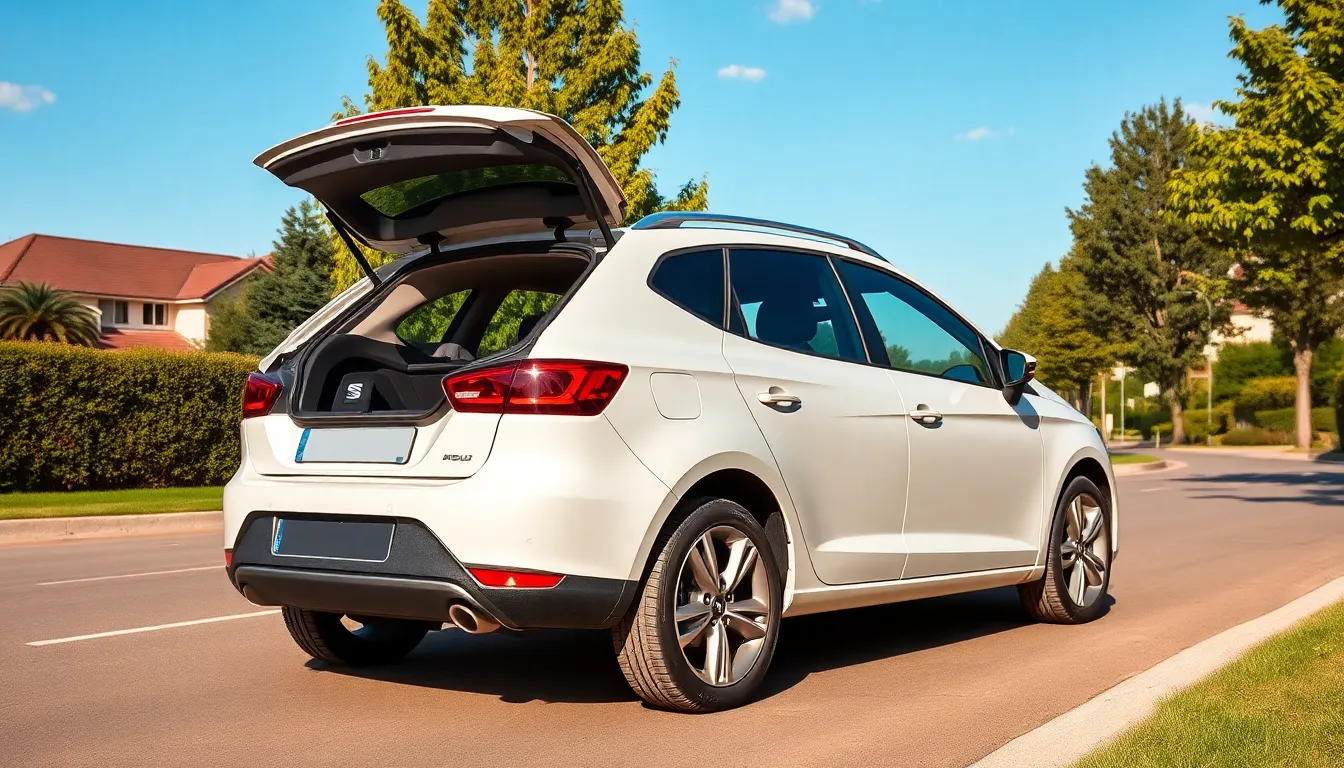
The León Mk1 excels as a practical daily driver, combining European refinement with Spanish sensibility to create a genuinely usable family hatchback. We find the León Mk1 delivers exceptional real-industry utility that matches or exceeds established competitors.
Boot Space and Storage
Boot capacity measures 380 liters with rear seats upright, positioning the León Mk1 competitively against rivals like the Golf Mk4 (350 liters) and Focus Mk1 (385 liters). Folding the 60/40 split rear seats expands cargo space to 1,162 liters for larger items such as furniture pieces, sports equipment, or vacation luggage.
Storage answers throughout the cabin include:
- Center console compartment with 1.2-liter capacity
- Door pockets accommodating 1.5-liter bottles
- Glovebox measuring 8 liters
- Rear seat pockets for magazines or small items
Loading height sits at a comfortable 73cm from ground level, reducing strain when lifting heavy objects. The wide tailgate opening measures 105cm, allowing easy access for bulky items like washing machines or bicycles.
Rear Passenger Space
Rear legroom provides 85cm of space when front seats are positioned for average-height drivers at 5’9″. Three adults fit comfortably across the rear bench for journeys under 2 hours, while longer trips work best with two passengers plus luggage.
Headroom measures 94cm in rear positions, accommodating passengers up to 6’1″ without compromising comfort. The flat floor design eliminates the central tunnel found in some competitors, creating additional foot space for the middle passenger.
Rear amenities enhance passenger comfort through:
- Individual reading lights for both outboard positions
- Adjustable headrests with height settings
- ISOFIX mounting points for child seats
- Cup holders integrated into door panels
Window area provides excellent visibility for rear passengers, with large glass panels reducing any sense of confinement during extended journeys. Climate control reaches rear zones effectively through dedicated vents positioned behind the front seats.
Technology and Equipment Levels
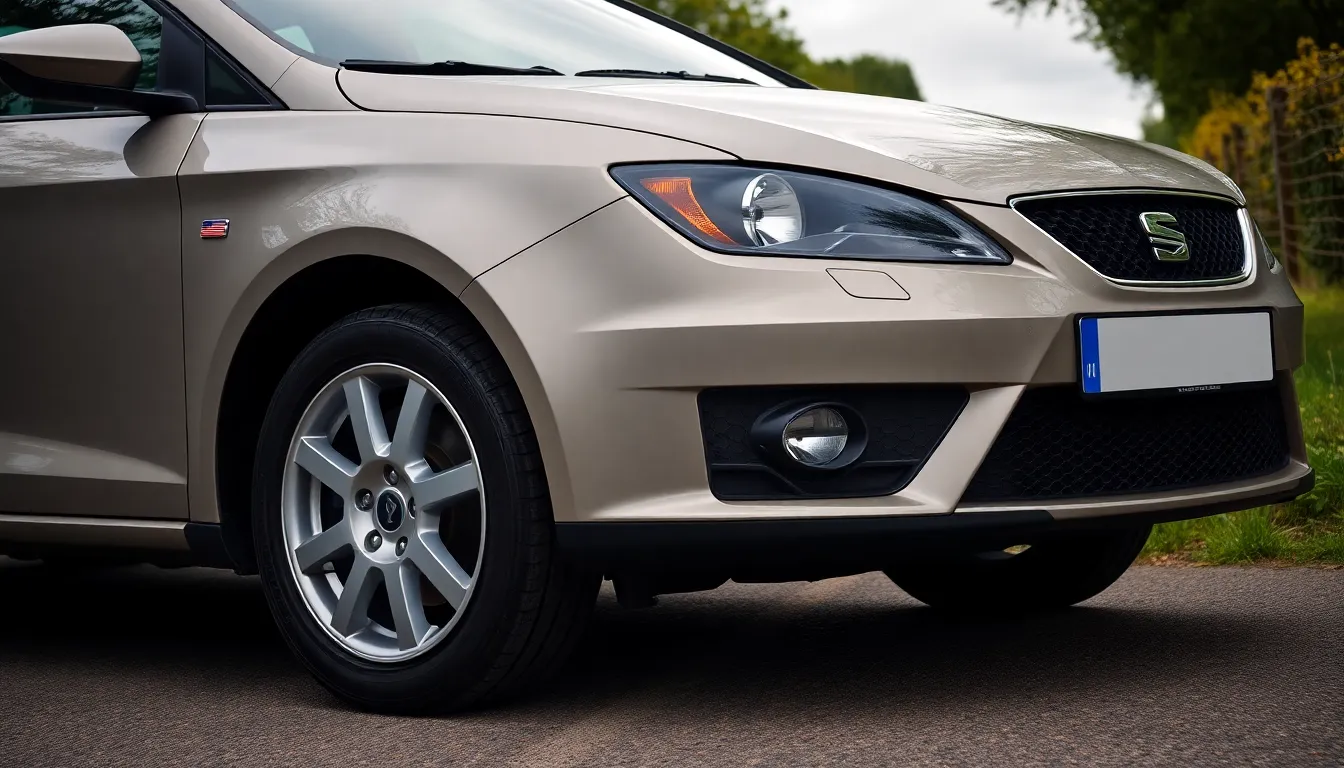
Technology specifications in the SEAT León Mk1 reflect Volkswagen Group’s commitment to democratizing advanced features across multiple price points. Standard equipment includes electronic stability control systems that were pioneering for this market segment in 1999. Anti-lock braking systems come equipped across all trim levels, while electronic brakeforce distribution enhances stopping performance on various road surfaces.
Equipment levels span three distinct grades: Reference, Signo, and Sport configurations. Reference models feature manual air conditioning, electric front windows, and a basic audio system with four speakers. Central locking operates via remote key fob, while body-colored bumpers distinguish these models from fleet variants.
Signo trim adds climate control with automatic temperature regulation, electric windows for all four doors, and fog lights with cornering illumination. Alloy wheels measuring 15 inches replace steel variants, while the audio system upgrades to include a CD player with eight speakers. Power steering receives speed-sensitive assistance for improved parking maneuverability.
Sport variants incorporate leather-wrapped steering wheels, sports seating with enhanced bolstering, and 16-inch alloy wheels as standard equipment. Electronic systems include trip computers displaying fuel consumption data, while automatic headlights activate based on ambient lighting conditions. Rain-sensing wipers respond to moisture detection, eliminating manual intervention during variable weather conditions.
| Technology Feature | Reference | Signo | Sport |
|---|---|---|---|
| Air Conditioning | Manual | Climate Control | Climate Control |
| Wheel Size | 14″ Steel | 15″ Alloy | 16″ Alloy |
| Audio System | 4 Speakers | CD/8 Speakers | CD/Premium Sound |
| Electric Windows | Front Only | All Four | All Four |
| Trip Computer | No | Basic | Advanced |
Electronic stability programs work along with traction control systems to maintain vehicle composure during emergency maneuvers. ABS systems cycle at frequencies up to 15 times per second, preventing wheel lockup on wet or slippery surfaces. Electronic brakeforce distribution allocates stopping power between front and rear axles based on loading conditions.
Advanced variants feature electronic differential locks that transfer torque between wheels experiencing different grip levels. Xenon headlight systems provide 2,500 lumens of illumination compared to 1,200 lumens from halogen alternatives. Automatic wipers detect precipitation intensity through optical sensors mounted behind the rearview mirror.
Comfort technologies include heated mirrors that clear condensation within 90 seconds of activation. Electric seat adjustment operates through six-way positioning on higher specification models. Cruise control maintains preset speeds while monitoring throttle inputs and brake applications.
Communication systems center around basic radio/CD combinations in entry-level variants, while premium audio setups deliver 80 watts of power through dedicated amplifiers. Antenna systems use diversity reception to minimize signal dropout during travel through varying terrain conditions.
Market Position and Competitors
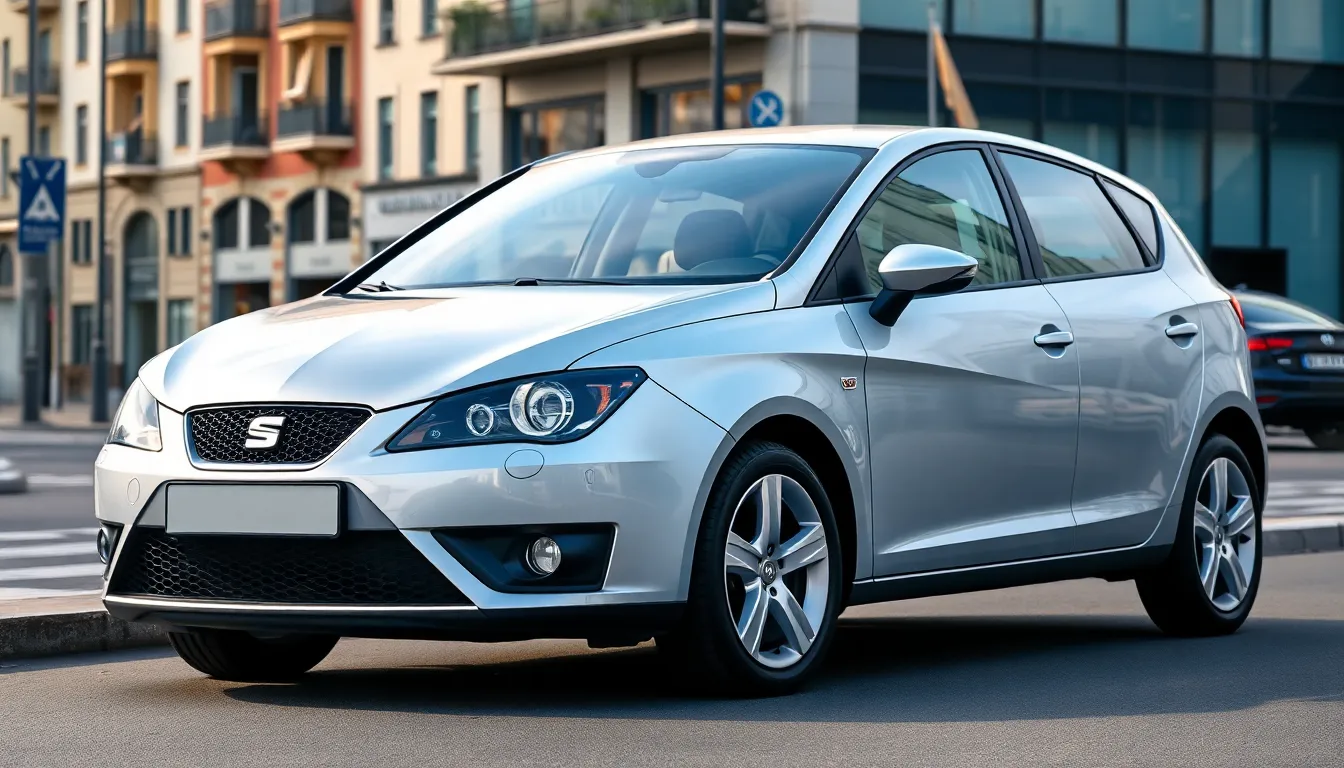
The León Mk1 positioned itself strategically between mainstream and premium segments during its 1999-2005 production run. SEAT targeted buyers seeking European sophistication without paying premium prices that German rivals demanded. Market analysts consistently placed the León Mk1 in the compact hatchback segment alongside established competitors like the Volkswagen Golf Mk4 and Ford Focus.
Direct competitors included several prominent European models that dominated sales charts across key markets. The Volkswagen Golf Mk4 represented the León’s closest platform sibling while commanding higher prices for similar specifications. Ford Focus offered comparable interior space and driving dynamics but lacked the León’s distinctive Spanish styling cues. Peugeot 306 competed on price points while delivering French engineering characteristics that appealed to different buyer preferences.
German premium alternatives included the Audi A3 8L and BMW 1 Series concepts that were emerging during this period. These models occupied higher price brackets but shared similar target demographics seeking performance oriented compact cars. The León Mk1’s pricing strategy positioned it approximately 15-20% below comparable German specifications while maintaining equivalent build quality standards.
| Competitor | Starting Price (2002) | Power Range | Key Advantage |
|---|---|---|---|
| Volkswagen Golf Mk4 | $18,500 | 75-150 hp | Brand prestige |
| Ford Focus | $16,800 | 75-170 hp | Handling dynamics |
| Peugeot 306 | $15,900 | 75-167 hp | Value pricing |
| Audi A3 8L | $24,200 | 110-180 hp | Premium positioning |
Japanese manufacturers like Honda Civic and Toyota Corolla competed primarily on reliability reputation rather than performance credentials. These models attracted conservative buyers prioritizing long term ownership costs over driving engagement. The León Mk1 differentiated itself by offering European handling characteristics that Japanese competitors couldn’t match in similar price ranges.
Performance variants faced competition from established hot hatchbacks that had dominated enthusiast markets throughout the 1990s. The Golf GTI represented the segment benchmark with its turbocharged 1.8T engine producing similar power outputs to the León Cupra. Renault Clio Sport variants offered French alternatives with aggressive styling and track focused suspension tuning.
British market positioning emphasized value engineering combined with continental sophistication that resonated with younger professionals. Export market success in Germany demonstrated the León’s ability to compete directly against domestic manufacturers on their home territory. Sales figures consistently showed the León capturing market share from established players across multiple European countries.
Regional preferences influenced competitive dynamics as Mediterranean markets embraced the León’s bold styling more readily than conservative Northern European buyers. The model’s success in challenging markets like the UK and Germany validated SEAT’s strategy of offering premium features at accessible price points. Competition intensified as rivals recognized the León’s threat to their established market positions.
Buying Guide and What to Look For
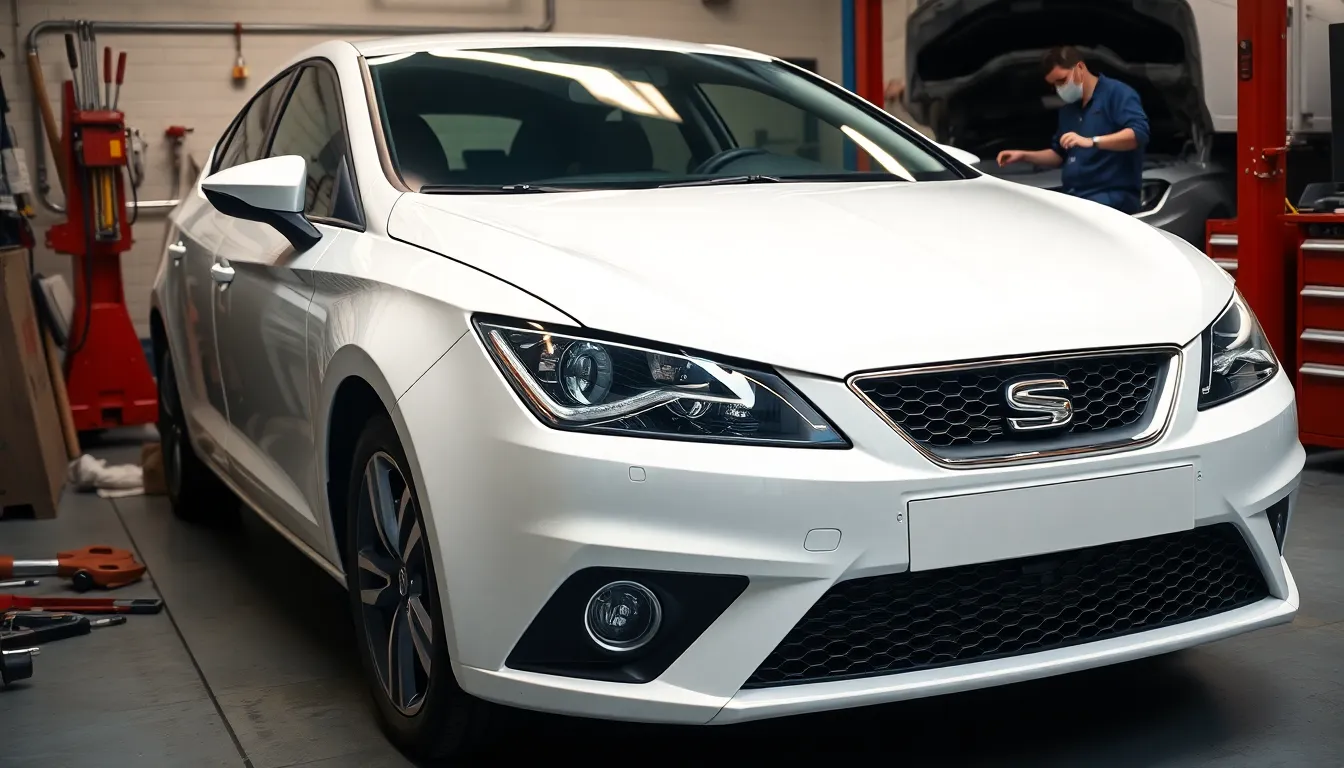
Finding the right SEAT León Mk1 requires attention to exact components that determine long-term ownership satisfaction. We recommend focusing on mechanical condition over cosmetic imperfections since these Spanish hatchbacks offer excellent parts availability and competitive repair costs.
Engine Assessment
Turbocharged 1.8T variants demand thorough inspection of the cooling system components. Check for coolant leaks around the water pump housing and radiator connections. Temperature gauge readings indicate potential thermostat failures that affect turbocharged engines disproportionately.
Diesel engines require examination of the turbocharger operation and exhaust smoke patterns. Blue smoke during startup suggests worn valve stem seals while black smoke under acceleration indicates fuel system irregularities. Listen for unusual noises from the timing belt area since these engines use interference designs.
Electrical System Inspection
Central locking malfunctions represent the most frequent electrical concern in León Mk1 models. Test all door handles and key fob functions during your inspection. Window regulator mechanisms fail commonly in vehicles exceeding 100,000 miles.
Dashboard warning lights require diagnostic scanning to identify stored fault codes. Check the instrument cluster for pixel fade issues that affect digital displays. Air conditioning systems often develop refrigerant leaks at compressor connections.
Suspension and Handling Components
Multi-link rear suspension bushings wear prematurely under spirited driving conditions. Push down on each corner of the vehicle to assess shock absorber condition. Excessive bouncing indicates replacement requirements.
Steering rack bushings create knocking sounds over rough surfaces when deteriorated. Front suspension strut mounts develop creaking noises that become apparent during parking maneuvers. Performance variants experience accelerated brake disc wear due to increased stopping demands.
Interior and Comfort Features
Seat bolster wear appears common in Cupra variants due to their supportive design. Check leather surfaces for cracking and fabric upholstery for excessive fading. Climate control systems require testing across all temperature settings and fan speeds.
Audio system functionality varies significantly between trim levels. Test CD player operation and radio reception quality. Electric window switches develop intermittent operation patterns after extended use.
Documentation and Service History
Complete service records indicate proper maintenance intervals and component replacements. Look for evidence of timing belt changes at recommended intervals. Cupra R models with documented performance modifications may command premium prices.
Registration documents confirm engine codes and original specifications. Import vehicles require additional verification of compliance modifications. Insurance group ratings affect ongoing ownership costs significantly.
Market Pricing Considerations
Standard variants range from $3,000 to $8,000 depending on mileage and condition. Cupra models command $6,000 to $12,000 with exceptional examples reaching higher values. Cupra R examples with low mileage exceed $15,000 due to limited production numbers.
Factor maintenance costs between $600 and $900 annually for typical ownership scenarios. Parts availability through Volkswagen Group networks keeps repair expenses competitive compared to premium alternatives.
Conclusion
The SEAT León Mk1 stands as a remarkable achievement that redefined Spanish automotive excellence between 1999 and 2005. We’ve seen how this exceptional hatchback successfully challenged established European rivals while delivering premium build quality at accessible pricing.
From its sophisticated Volkswagen Group engineering to its distinctive Spanish styling the León Mk1 proved that outstanding vehicles don’t always carry German badges. The diverse engine lineup paired with impressive handling dynamics created a compelling package for both enthusiast drivers and practical families.
Today we recognize the León Mk1 as a smart investment opportunity. With strong parts availability reasonable maintenance costs and growing collector interest particularly for Cupra variants this Spanish gem offers exceptional value in the used car market.
Whether you’re seeking daily driver practicality or weekend performance thrills the León Mk1 delivers authentic European sophistication without the premium price tag.
Frequently Asked Questions
What years was the SEAT León Mk1 produced?
The SEAT León Mk1 was produced from 1999 to 2005. During this six-year production run, approximately 500,000 units were manufactured, establishing the León as a significant model in SEAT’s lineup and helping transform the brand’s image from budget manufacturer to serious performance car contender.
What platform is the León Mk1 built on?
The León Mk1 is built on Volkswagen Group’s proven PQ34 platform, which it shares with the Audi A3 and Skoda Octavia. This platform features sophisticated multi-link rear suspension and precise steering geometry, providing the foundation for the León’s impressive ride quality and handling characteristics.
What engine options were available in the León Mk1?
The León Mk1 offered diverse engine options including petrol engines (1.4L, 1.6L, and 1.8T turbocharged) and diesel variants (1.4 TDI and 1.9 TDI). The performance-oriented Cupra models featured the 1.8T engine with 180 hp in standard form and 210 hp in the range-topping Cupra R variant.
How much boot space does the León Mk1 offer?
The León Mk1 provides 380 liters of boot space with rear seats upright, expanding to 1,162 liters when the rear seats are folded down. This practical cargo capacity positions it competitively against rivals and makes it suitable for both daily driving and longer trips with luggage.
What are common reliability issues with the León Mk1?
Common issues include electrical problems affecting central locking and window regulators, cooling system failures in turbocharged variants, and premature suspension component wear. However, the León Mk1 generally delivers solid reliability, and parts availability remains excellent, keeping maintenance costs competitive compared to premium German alternatives.
What safety rating did the León Mk1 achieve?
The SEAT León Mk1 earned a four-star Euro NCAP safety rating, reflecting its solid build quality and comprehensive safety features. Standard safety equipment included pioneering electronic stability control and anti-lock braking systems, demonstrating Volkswagen Group’s commitment to safety across all price points.
How does the León Mk1 compare to its competitors?
The León Mk1 strategically positioned itself between mainstream and premium segments, offering European sophistication at prices approximately 15-20% below comparable German specifications. It competed directly with the Volkswagen Golf Mk4 and Ford Focus while providing an alternative to premium models like the Audi A3.
What should buyers look for when purchasing a León Mk1?
Focus on mechanical condition over cosmetic flaws, inspect turbocharged variants for cooling system issues, check diesel engines for turbocharger performance, and examine electrical systems for common faults. Review service history carefully, especially timing belt changes. Market prices range from $3,000-$8,000 for standard variants, with Cupra models commanding $6,000-$12,000.

